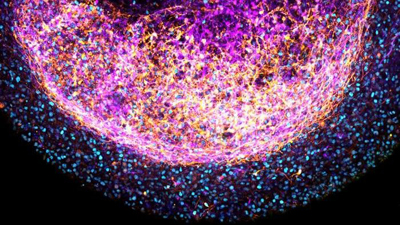Cerebral Organoids
Submitted by JtC on Sun, 01/14/2024 - 1:37pmScience, in its quest for understanding the world around us, both within and without the human condition, has made great strides forward in developing techniques to better help us comprehend the complex structure and pathology of the human brain. One of these advancements are organoids.
Organoids are 3D cell cultures derived from pluripotent stem cells that mimic the structure, function, and cellular complexity of human organs. These in vitro, miniaturized versions of organs are especially well suited for studying complex multicellular organ structures, such as the brain, retina, kidney, and lungs, and are now widely used to study organ development and disease.
Recently scientists have for the first time grown mini-brains from fetal brain tissue that are about the size of a grain of rice. Tiny brains were previously grown from fetal stem cells but now, for the first time, from actual fetal brain tissue, opening exciting possibilities for the future.




